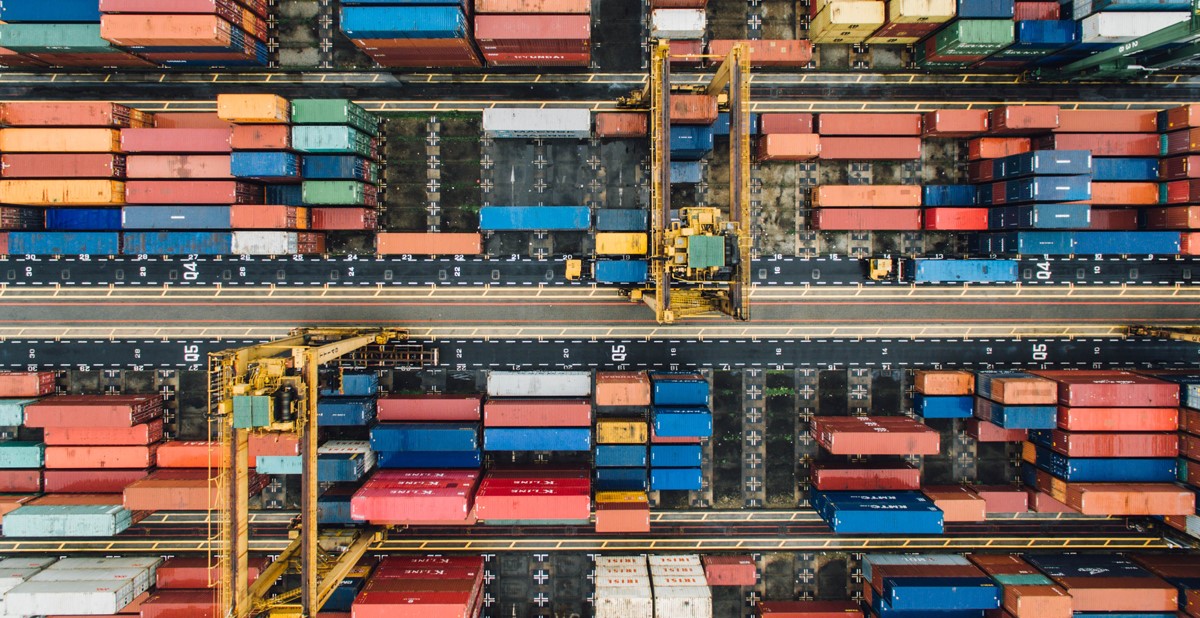Supply Chain Remedies Are Top Priority At Ports Of L.A., Long Beach

Last week, the backlog of ships waiting to offload cargo at the Southern California ports of Los Angeles and Long Beach—which are collectively responsible for approximately 40 percent of U.S. imports—reached an all-time high of more than 100 vessels. Prior to the pandemic, the ports typically saw less than 20 ships at anchor. The queue of container ships is another sign of a supply chain crisis and its effects are being felt in myriad ways, from long lead times for shipments and empty store shelves to effects on the neighborhoods near the ports, which are now clogged with trucks hauling shipping containers. However, businesses and government at every level are applying new ideas to free up the bottleneck.
The ports are bringing in record amounts of cargo. The Port of Los Angeles reports that last month, it processed 903,865 TEUs (Twenty-foot Equivalent Units), the busiest September ever in the port’s 114-year history. Year to date, overall cargo volume stands at 8,176,917 TEUs, an increase of 26 percent compared to 2020. This volume is overwhelming a complex system that is already hampered by a range of factors, including a lack of warehouse space, truck driver shortages and the effects of the pandemic.
Last week, Ryan Petersen, CEO of freight forwarding service Flexport, took to Twitter to share his observations from a boat tour of the Port of Long Beach complex. During his time on the water, despite hundreds of cranes available, he saw only seven in operation and the unloading of less than a dozen containers. The consensus of those he spoke with was that the bottleneck in the system was because of a lack of yard space at the terminals. The ports don’t have space to offload containers from ships, or space to offload empty containers from chassis so that they can be used to move new cargo.
Exacerbating the issue were Long Beach zoning codes that limited truck yards from stacking empty containers more than two high. However, on Friday, Long Beach Mayor Robert Garcia announced that effective immediately, Long Beach is temporarily allowing cargo to be stacked up to four containers high at container lots across the city and up to five high containers with safety approvals. This move is expected to free up thousands of chassis that can then be used to move cargo from the ports.
Earlier this month, the Biden Administration announced that the Port of Los Angeles would expand its hours of operations to 24/7 and that several large companies, with Walmart, FedEx and UPS among them, are to accelerate their operations to get goods shipped faster. The Port of Long Beach had already moved to 24/7 operations in a pilot program, and Union Pacific has expanded its rail service at its San Pedro facility.
While meaningful improvements, industry experts expressed skepticism that expanding the ports’ operating hours would move the needle on the supply chain crisis in a significant way if warehouse and trucking operators don’t step up as well. To encourage cargo movement, the ports of Los Angeles and Long Beach announced on Monday that on November 1, they will begin assessing a surcharge to ocean carriers for import containers that remain on marine terminals.
Under the new policy, the ports will charge ocean carriers for each container that falls into one of two categories. In the case of containers scheduled to move by truck, ocean carriers will be charged for every container dwelling nine days or more. For containers moving by rail, ocean carriers will be charged if the container has dwelled for three days or more. The ports will charge ocean carriers with cargo in those two categories $100 per container, increasing in $100 increments per container per day.
“We must expedite the movement of cargo through the ports to work down the number of ships at anchor,” says Port of Los Angeles Executive Director Gene Seroka. “Approximately 40 percent of the containers on our terminals today fall into the two categories. If we can clear this idling cargo, we’ll have much more space on our terminals to accept empties, handle exports and improve fluidity for the wide range of cargo owners who utilize our ports.”
Port of Long Beach Executive Director Mario Cordero adds, “With the escalating backlog of ships off the coast, we must take immediate action to prompt the rapid removal of containers from our marine terminals. The terminals are running out of space and this will make room for the containers sitting on those ships at anchor.”
Fees collected from dwelling cargo will be re-invested by the two ports for programs designed to enhance efficiency, accelerate cargo velocity and address the congestion throughout the San Pedro Bay.
“I support the actions taken by the ports of Los Angeles and Long Beach today to charge ocean carriers for lingering containers on marine terminals. These actions aim to expedite the movement of goods and reduce congestion in our ports,” says John D. Porcari, port envoy to the Biden-Harris Supply Chain Disruptions Task Force. “As our economy continues to grow, increased demand and disruptions caused by the pandemic are putting our supply chains to the test. While we’ve seen new records set in terms of throughput this year at West Coast ports, we need more players throughout the supply chain to keep stepping up. The federal government will continue to bring together private companies and stakeholders from across the supply chain and serve as an honest broker helping to surface solutions like this to address supply chain disruptions.”

